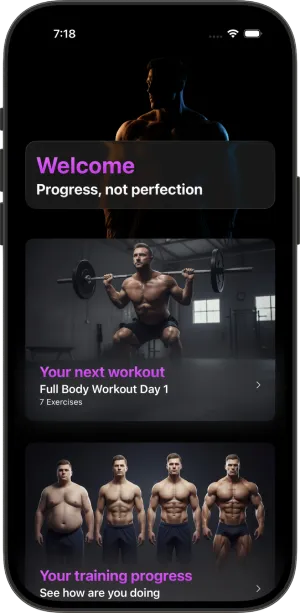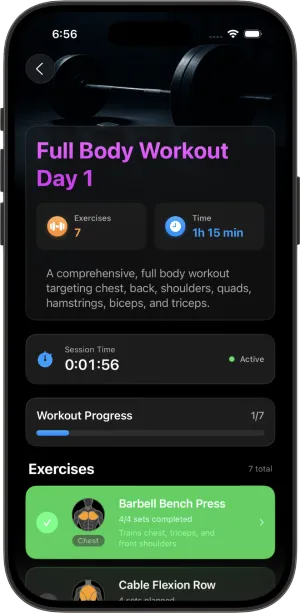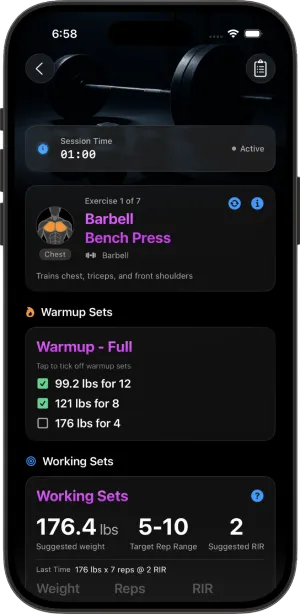Smart muscle building Science-based hypertrophy app

Real Results from a Real User
See the incredible transformation achieved by a GetJacked user who committed to consistent training
"GetJacked Changed Everything"

"I struggled for years trying different programs without seeing real progress. GetJacked's smart weight suggestions and progress tracking kept me motivated and accountable. The results speak for themselves."

"GetJacked Changed Everything"
"I struggled for years trying different programs without seeing real progress. GetJacked's smart weight suggestions and progress tracking kept me motivated and accountable. The results speak for themselves."
Start your own transformation journey today with GetJacked
See GetJacked in Action
Experience the sleek, user-friendly interface designed to make fitness tracking effortless and motivating.

Home Dashboard
Track your next workout and overall progress with intuitive design

Workout In Progress
Active workout session with exercise tracking and timer

Exercise Tracking
Log sets, reps, and weights with smart suggestions and muscle targeting

Progress Analytics
Visualize your strength gains with detailed charts and PR tracking
Powerful Features for Serious Results
GetJacked provides everything you need to build muscle, track progress, and achieve your fitness goals with intelligent features designed for real results.
Exercise Progress Tracking
Track your performance on every exercise with detailed weight, reps, and RIR (Reps in Reserve) logging
Smart Weight Suggestions
Get intelligent weight recommendations for optimal progressive overload based on your last performance and target rep ranges.
Visual Progress Charts
See your strength gains over time with beautiful progression charts that show your performance trends.
Personal Record Tracking
Celebrate your achievements with automatic PR detection and progress tracking for every lift.
Muscle Group Targeting
Visual muscle group indicators show exactly which muscles each exercise targets - chest, triceps, front shoulders and more.
Workout Session Timer
Time your workouts with built-in session tracking, rest periods, and active workout monitoring for maximum efficiency.
Ready to Get Jacked?
Download GetJacked today and start your journey to a stronger, healthier you. Join thousands of users who are already seeing incredible results.
Transform your fitness journey with intelligent workout tracking and personalized training programs.
© 2025 GetJacked. All rights reserved. Made with 💪 for fitness enthusiasts.